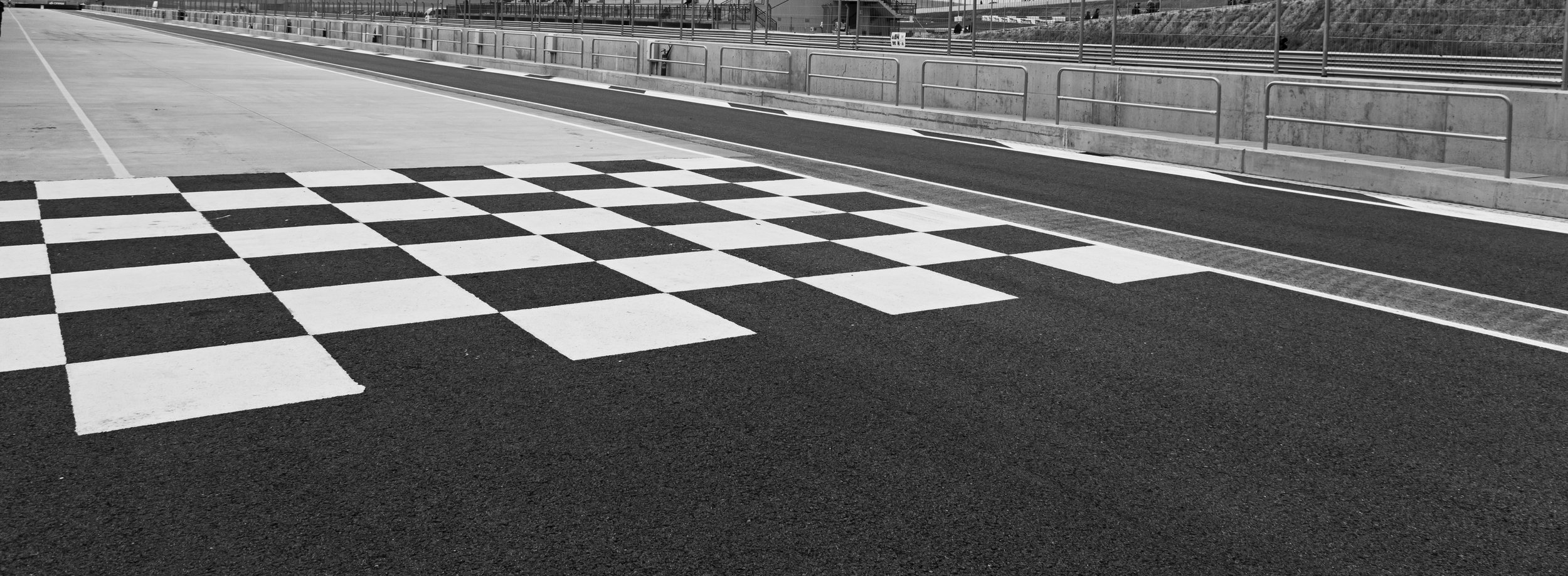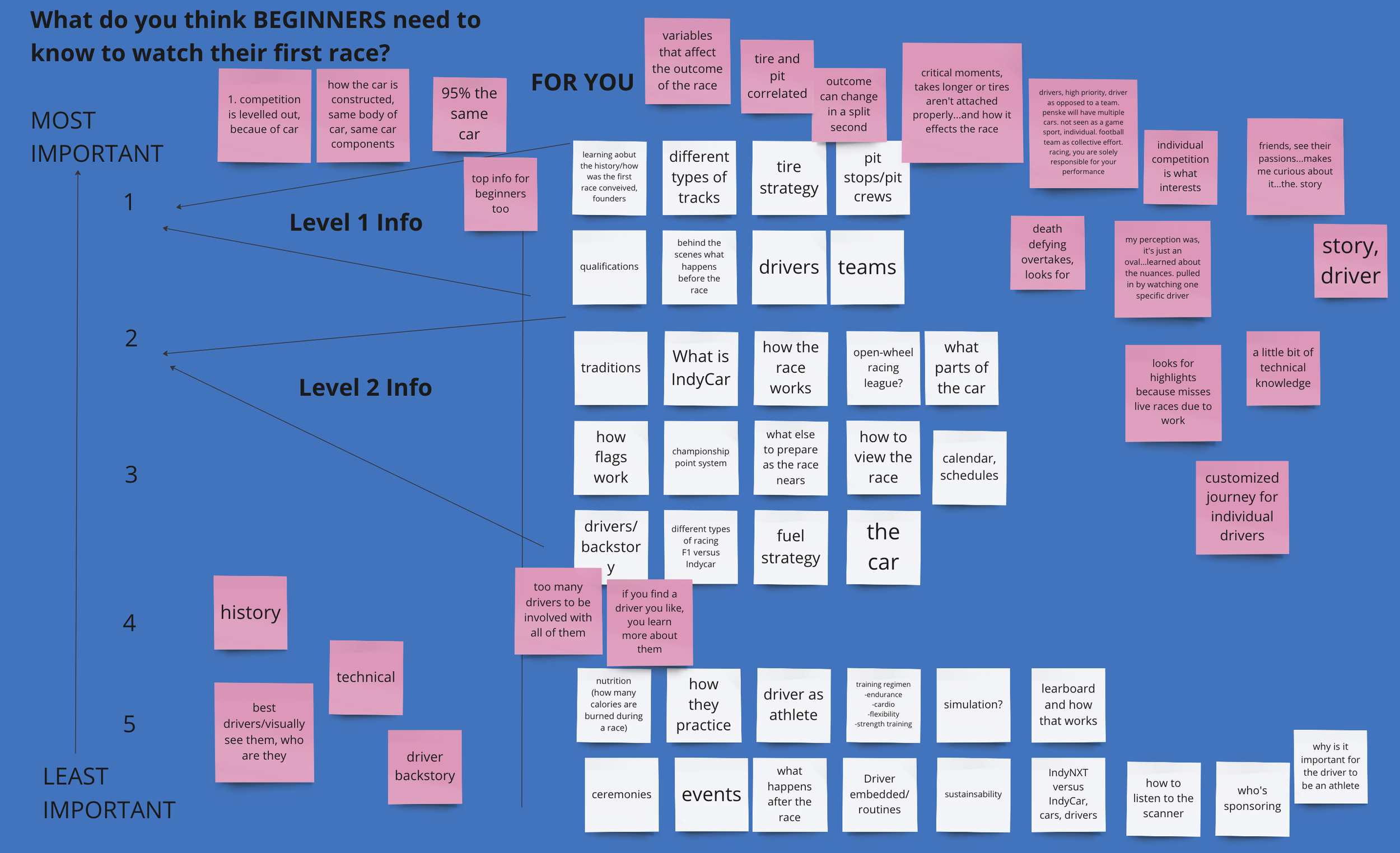NTT INDYCAR SERIES:
NEW FAN ENGAGEMENT
Roles: UX Researcher, Designer and Information Architect
Racing is a niche sport with lots of nuance. Racing superfans may have gotten into the sport because of a love of cars and tinkering with those cars, learning the inner workings of a car and what makes it go faster or fall apart.
In today’s technology driven world, people don’t seem as intersted in the sport of racing. Formula1 has captured an audience with its fast speeds, dangerous racing moves, and diversity of drivers, while IndyCar has been hard pressed to attract the same attention.
How do we attract new racing fans to the NTT INDYCAR SERIES and teach them about the sport?
We audited the INDYCAR 101 site and found some areas for opportunity:
Design Recommendations:
Choose targeted content and reduce text significantly
Focus on racing concepts critical to understanding a race
Find ways to use hover functionality, hiding content while maintaining access
Dynamic images and video content should replace text wherever possible
Rework sections to include relevant information and align content to section titles
Create topic-based navigation flow and eliminate dual hamburger menus
Next, we needed to learn how to learn about the sport…
Since we want to target this site to beginners, we should just go ask them what they want to know, right?
Wrong. When we asked beginners and non-fans what they would want to learn about racing, we found that they don’t know because they don’t know anything about the sport yet.
So, we realized that we needed to change the question. Instead of asking, “What do beginners and non-fans want to learn,” instead we started asking:
“How did SUPERFANS learn about the sport?”
We conducted a card sorting exercise with superfans to determine how they learned about the sport of racing and how they became a fan.
Cards in white are participant cardsCards in pink are notes taken after card sorting was completedCard Sort Results
We conducted a card sorting activity with 4 superfans and observed 2 superfans watching a race…
Results from card sorting, interviews, and observations revealed the following pattern of high priority information.
As we learned about each topic, we realized that two topics fit within “What is INDYCAR?”:
Both topics, “The Car” and “Drivers” are integral to understanding the NTT INDYCAR SERIES. An NTT INDYCAR SERIES car is unique from cars in other racing leagues in that it is an open-wheel car.
Essentially all cars within the NTT INDYCAR SERIES are roughly the same, with little room for modification. This is important to note because racing similar cars raises the importance of the skill of individual drivers.
In addition to the skill of a driver, there are athletic components to driving and a driver’s training regime can impact their skill.
Then, we broke down each category into blocks of information that make up each topic.
Notice that DRIVERS is listed twice.
Duplicate DRIVER sections caused confusion in user testing and we had to rethink headings for these sections.
Additionally, the NTT INDYCAR SERIES main homepage lists DRIVER information as well. Which brought up the following questions:
Is a beginner DRIVER section necessary and how do we differentiate it from the existing DRIVER section?
What would beginners need or want to know about a DRIVER versus how a superfan consumes DRIVER information?
How the DRIVER affects a race
Individual DRIVER information
We continued to breakdown information and organize concepts…
Breakout of TRACK TYPE information
Initial breakdown of HOW A RACE WORKS
Once we had a working map of racing concepts, we started to build a prototype to include our 6 main topics of beginner information.
We began roughly laying out screens according to how information might unfold and started researching each concept, to determine bits of information to include for each concept.
Once a concept was researched, we started to build screen structures.
This led to an initial prototype…
Early high fidelity prototype…
Prototype evolution after rounds of user testing
Prototype
Prototype
Next Steps and Future Work…
Continue exploration of video content and how it could be used in place of text
Continue to rework DRIVERS page
Continue to develop and refine content





















